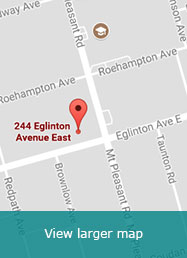Transmission and Distribution
Over 200,000 kilometres of high voltage transmission and low voltage distribution lines deliver electricity from Ontario’s generating stations to our homes and businesses.
Maintaining the reliability of this ageing system of lines and related equipment like transformer and distribution stations should be the first priority investment.
While investments in emerging “smart grid” technologies can stimulate innovation, job creation and economic growth, implementation should be done strategically and be based on cost/benefit analyses that sustain the ageing power grid and the province’s transmission and distribution assets.
Ontario is spending billions of dollars on “smart grid” technologies to manage a supply mix now complicated by ever-changing production from wind and solar generation. Ratepayers are not being told what the final costs will be.
‘Smart’-grid technologies could help reduce demand, save money, and improve reliability and efficiency by incorporating new networking tools like sensors and controls. Several challenges remain unresolved;
- Smart meters and time-of-use rates generate huge volumes of data that must be managed and control systems that must respond to rapid changes in consumer demand. This presents two risks for ratepayers—privacy issues and cyber-attacks.
- Other emerging approaches like energy storage and demand response can enable the creation of microgrids. These are discrete energy systems of distributed energy sources and customer loads that can disconnect from the traditional grid and operate autonomously.
- Consumers deserve transparent information about the costs of smart technologies and microgrids, including the management of any resulting wastes and the benefits. Most importantly, how will these costs and benefits be shared by consumers and developers?
- The economic life-cycle of these emerging technologies is in the 20-30 year range versus a hydropower plant that can run for 100 years or a nuclear plant that can operate for over 60 years.
- The financial viability of Hydro One, of which 47.4% is owned by the province is being undermined by government policy. Big multinational companies that have already received ratepayer-supported incentives for wind and solar farms are being granted transmission licenses. The government is also moving towards a competitive process for building new transmission lines that will further challenge Hydro One’s financial viability and send revenues out of Ontario.
- Fragmentation of Ontario’s grid system, reduces Hydro One’s potential earnings, thereby reducing benefits for all Ontario ratepayers.
- The province’s local distribution companies, most of which are publically-owned, are juggling major fiscal challenges including the delivery of conservation programs, the integration of intermittent renewable generation, and the training of skilled workers to replace a wave of retirements.
- Ontario does have an extraordinary ‘smart’-grid investment opportunity: electric vehicles.






